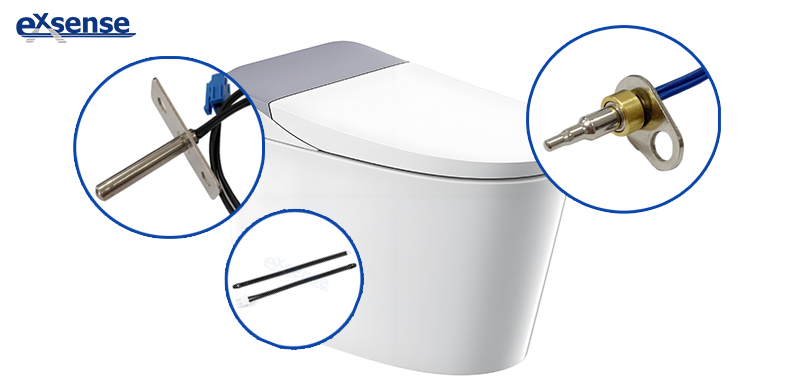In the temperature control system of smart toilets, NTC (Negative Temperature Coefficient) temperature sensors serve as the core thermal sensing components, primarily applied in the following three types:
With the integration of innovative technologies into daily life, smart toilets have become increasingly convenient and safe in terms of performance. In the temperature control systems of smart toilets, NTC temperature sensors serve as core thermal sensing components, primarily applied in the following three categories:
- Smart Toilet Water NTC Temperature Sensor
Typically installed at the flushing outlet or inside the water tank, this sensor measures the water temperature in the toilet tank or outlet to ensure it remains within an appropriate range. The product design commonly features a bullet-shaped structure with an extensive contact surface and compact size, achieving a rapid response time of 0.3 seconds. Additionally, its waterproof encapsulation ensures long-term stability in humid environments.
- Smart Toilet Air NTC Temperature Sensor
This sensor measures the temperature of the air outlet beneath the toilet seat, ensuring the constant-temperature drying function operates safely to prevent overheating and user burns. By transmitting temperature data to the control system, it enables precise air temperature regulation. It can also maintain a consistent temperature based on user preferences, enhancing comfort for diverse needs.
- Smart Toilet Seat Heating NTC Temperature Sensor
Installed near the heating membrane of the toilet seat, this sensor measures the seat temperature and adjusts heating according to user requirements. It ensures year-round thermal comfort regardless of seasonal changes.
These NTC temperature sensors play a vital role in smart toilets by monitoring internal temperatures in real-time and transmitting data to the control system. This allows for precise temperature management and optimization of user experience. Notably, variations in design, installation locations, and measurement accuracy among sensor types necessitate tailored selection based on specific application requirements

